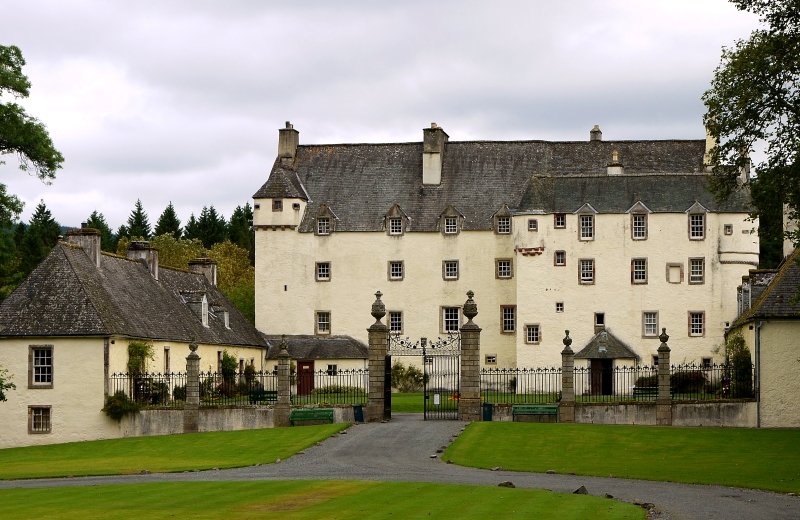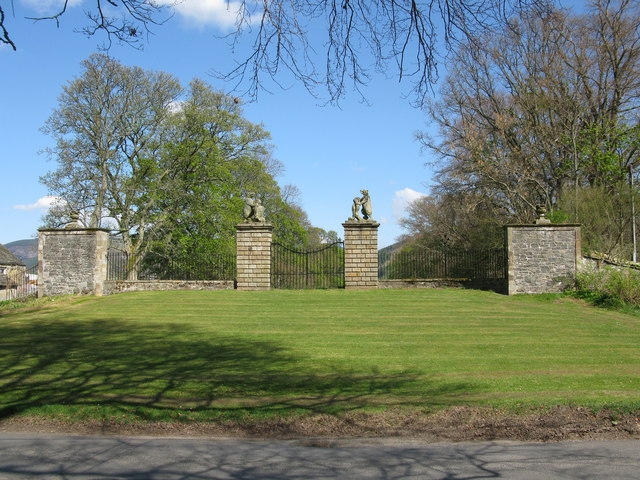
Located near Innerleithen in Peeblesshire, Traquair House has been in existence longer than the record books. Tradition tells that the original building was a heather hut dating from 950, deep in Ettrick forest.
The forest surrounding Traquair teemed with wildlife and game, including wolf, wild boar and bear. A royal hunting lodge from the 11th century, the property was incorporated within a border tower during the political upheaval following Alexander III's death. Under the reigns of both Edward I and Edward II the house was occupied by English troops, but was returned to the Crown with Robert the Bruce's ascension to the Scottish throne in 1306.
For the next two centuries ownership of the house passed through a number of families, reverting to the Crown from time to time. By the close of the 15th century the property was in the hands of James Stuart, the first laird of Traquair.
The house that exists today remains practically untouched since the end of the seventeenth century, not the least of which are the Bear Gates which were closed in 1745 by the fifth Earl after wishing his guest, Prince Charles Edward Stuart a safe journey, with the promise that the gates would not be reopened until the Stuarts were restored to the throne. They remain closed to this day.
At the end of a narrow drive, the house sits in the midst of a park-like setting. The rain has stopped, though it's still a bit misty and chilly. Not knowing whether photographs are allowed in this privately owned property, we leave cameras in the car and trek down a path and past a horseshoe shaped emerald green lawn to the entrance of the house. A lone peacock struts on this lawn, following behind two fat white geese. They seem to be leading him on quite a wild goose chase and we laugh as the geese suddenly veer off toward the woods with the peacock rushing to catch up with them.
Soon we are inside and touring the many rooms of this extremely well preserved house. Unlike Castle Howard, it's easy to visualize someone actually living here. There are docents stationed here and there and we stop to talk with a woman in the dining room, where I am perversely fascinated by an elephant's foot that has been preserved and turned into a tobacco canister.
Walking through the lower drawing room, which is roped off, the woman informs us that there is to be a wedding held at Traquair later in the afternoon and that the drawing room will be used for photographs.
We arrive back at the entrance and realize that we had earlier missed the arrow that points the suggested path of an informal tour listed in the guidebook. It's unusual for us to have purchased guidebooks upon arrival; we like to wander around in ignorant bliss, absorbing the atmosphere and gaining our own impressions before being formally educated.

Traquair House, approximately seven miles southeast of Peebles, is claimed to be the oldest continually inhabited house in Scotland. While not strictly a castle, it is built in the style of a fortified mansion. It pre-dates the Scottish Baronial style of architecture, and may have been one of the influences on this style.
The Bear Gates at the main entrance to the grounds were installed by the fifth Earl, Charles Stuart, in 1738. When they were closed, after Charles Edward Stuart (Bonnie Prince Charlie) passed through in 1745, the Earl vowed they would never be opened again until a Stuart king returned.
Read more about Traquair House at Wikipedia.